|
While our summer monsoon rains were plentiful, October and November were back to drier and warmer conditions. The last significant rainfall was early October, and the Valley set a new record for the most days in November with temps above 80 degrees. A La Niña weather pattern has been predicted meaning we may experience warmer temps as well as less rain and snow through the winter months. That's right...not great news.
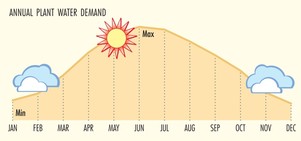
While plant water usage is at its lowest level in December, low humidity and windy conditions can dry out your plants quickly.
What's our best advice? Make sure you’re providing deep but infrequent irrigation for your plants (learn more below). This will help them fare better during cold temps and frosts, too.
Graph above: Due to daylength and temperatures, seasonal plant water needs can use 3 to 5 times more water during the hot, dry summer as they do during the winter.
|
Recommendations below are for plants that are established in the landscape (in the ground about two years).
- Desert Adapted - once every 35 days
- High Water Use - once every 18 days
- Desert Adapted - once every 45 days
- High Water Use - once every 21 days
- Desert Adapted - once every 28 days
- High Water Use - once every 14 days
Cacti and succulent watering
Annuals & vegetable watering
- Once every 7-10 days (or more if you are starting seeds)
Wildflower watering
- Once every once every 10-15 days
Note: These recommendations are a general guideline only and may need to be modified for your specific site conditions.
Landscape Watering by the Numbers: Don’t forget our online, interactive watering guide. If you input some simple information about your landscape irrigation system, it will tell you how long to water to give your plants just the right amount with these frequencies.
Frost Protection for Your Plants
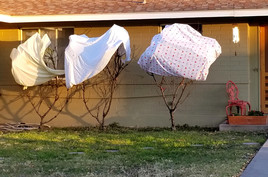
With temps above normal, it may be a while before we get our first cold snap. Our typical first frost is around Dec.12. If you want to be prepared, learn how to protect your plants on this University of Arizona Frost and Cold Temperature resource page.
Note: It's best to use sheets or frost protection fabrics that go all the way to the ground for best results, and to remove them during the day.
|

Plant of the Month
Cascalote - Have you noticed the trees with cheerful yellow flowers this month? This winter bloomer is a great medium-sized tree for the landscape. You can find details on cascalote and more at our Water – Use It Wisely’s Plant of the Month series.
|
Landscape Tips for December
Find Landscape Tips for December provided by the UofA Cooperative Extension. Wondering why your citrus fruit is splitting open or how to best fertilize your winter lawn? This listing of typical problems and maintenance recommendations is sure to help.
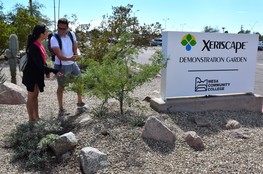
Local Xeriscape Demonstration Gardens
Here's a great way to enjoy walks outdoors. Find our list of demonstration or botanical gardens to visit. We have two in Mesa, but heck, go out of town... Glendale, Scottsdale, and others have some amazing gardens to see also.
|
Watering Deeply But Infrequently
Deep and infrequent watering offers many benefits. So what are those benefits and how do you do it?
Benefits: First, deep watering ensures water gets down to lower levels in the soil instead of just at the surface. Location of moisture deeper in the soil profile encourages roots to grow deeper which helps to develop a stronger and more resilient root system. Shallow watering causes roots to stay near the soil surface where they are more susceptible to stress, especially during a hot, windy day when the surface can dry out quickly.
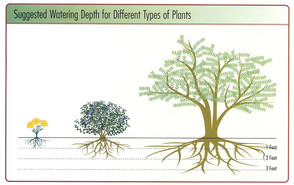
How to Water Deeply: Your goal is to soak the root ball and the surrounding soil with water, penetrating 1 to 3 feet relative to the size of the plant. Depending on your soil type, 1" of water on the surface will penetrate approximately 6-10" into the soil. We offer a handy chart that estimates how many gallons it will take.
What About the Infrequent Part? I'm glad you asked. The drying period is not only important so the surface does dry out (and keeps those roots deeper in the soil) but also important for the health of the plant as roots need oxygen to stay healthy. Infrequent watering will help you save water, too. This time of year, if we don't get at least a half-inch of rain, that frequency would be once every 30 days for cactus and desert trees, once every 2 weeks for citrus, shrubs, and dormant Bermuda etc. Our Landscape Watering by the Numbers booklet provides a helpful seasonal frequency chart. Learn more.
|
Living Green: Mesa Water Sources, How We Use It, and Ways To Save It

Jan. 22, 2-3:30 p.m. Get your questions answered about the City of Mesa’s water supplies, what we are doing to manage our water resources, and how we use water in day-to-day operations.
We’ll provide you with the tools and our best techniques to reduce your water use both indoors and in your landscape. You’ll save water and money, too. Each participant will get landscape booklets and a water conservation kit.
The program will include a short overview of the City’s Climate Action Plan and our commitment to making Mesa a greener community. Presenters include Brian Draper from City of Mesa Water Resources and Donna DiFrancesco from Environmental Management & Sustainability.
LOCATION: Red Mountain Library, 635 N. Power Road. Learn more.
|
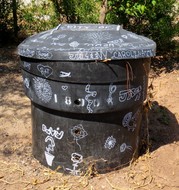
Do You Want to Compost at Home?
All About Composting: Many 'On Demand' video classes are available. We like this composting program from Glendale presented by instructor, Ryan Wood. See if you are reminded of the American Gothic painting at about 54 minutes into the program. 😉
DYK? The City of Mesa has backyard compost containers available to Mesa residents for a $5 non-refundable delivery fee. Learn more.
|
Mesa Living Green Workshop Video's Available On Demand!
Just visit our Events Page to find the following 1-hour videos:
- Landscape Plants to Provide Shade, Color, & Wildlife
- Summer Savings by Reducing Water and Energy Use at Home
- Xeriscape: Landscaping with Style in the Arizona Desert
- Secrets of Summer Watering and Maintenance
There are a number of ways to save water and they all start with you...
Thank you for being a subscriber this year... and for all of your efforts to save water! Also, be sure to sign up for our Living Green eNews. These alerts notify subscribers of sustainable and green programs, events, and opportunities. See last month's news. To sign up, just put your email in the box in the upper right corner or bottom of the page where it says "Subscribe for Updates." When you get to the eNews listing, check the 'Living Green' box under the 'Water Conservation & Sustainability' heading. Also, be sure to follow us on our Living Green Twitter.
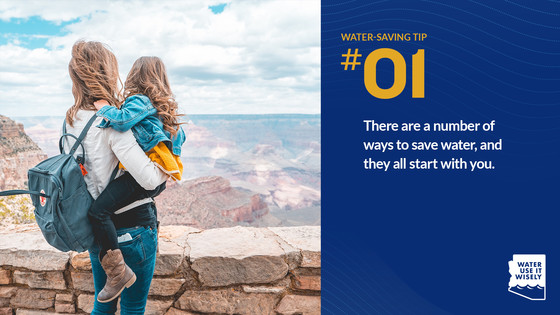
Citywide Info:
Coronavirus (COVID-19): Find City updates, data, and helpful relief programs and resource links. City departments are following established protocol and using appropriate precautionary measures in providing services to our residents and businesses.
Climate Action Plan Survey: This is one of many ways you can partner with the City of Mesa and share your climate action ideas, priorities, and concerns to help guide a collective vision for our community.
**Reduce your landscape water use 30 to 50 percent by adjusting your irrigation each season.** Landscape Watering by the Numbers: A Guide for the Arizona Desert will help you determine how much water to apply and how long to run your system. Visit the interactive website or request a free copy of the booklet.
-H2O-
|